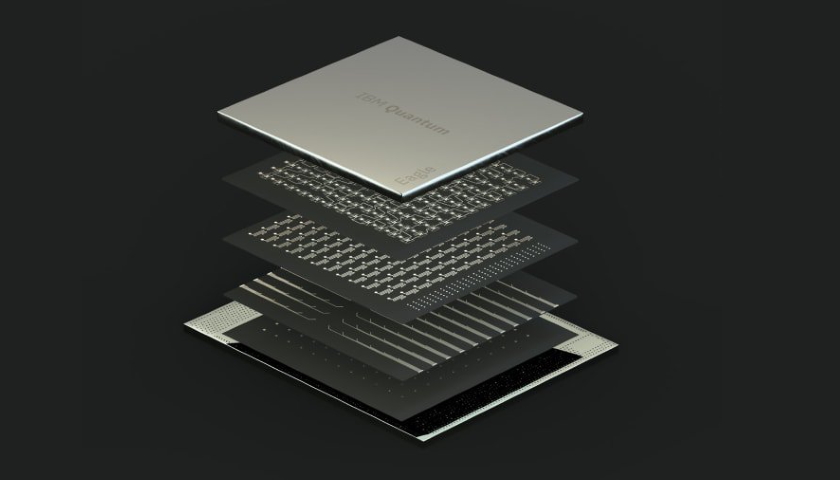IBM has unveiled its latest quantum computing processor, the 127-qubit Eagle.
It plans to launch the chip as a test system to select members of the IBM Quantum Network over the IBM Cloud soon.
The company said that it had a new design puts all the qubits on a single layer, but all the control components on multiple physical levels.
This design allowed for a significant improvement in computing power, the company said. But IBM did not provide further details about the processor’s power.
Not all qubits are the same, with different systems having varying levels of stability and error rates. IBM has its own benchmark it came up with to value qubits, the Quantum Volume metric, which ranked previous IBM systems as the best in the world. IBM also recently introduced the CLOPS performance standard to measure the number of quantum circuits a quantum processing unit can execute per unit of time. IBM is yet to release Quantum Volume or CLOPS information for Eagle.
The company said that the processor was its first to be too complicated to be simulated by a classical supercomputer. However, IBM did not say that it had reached quantum supremacy – when a quantum computer can solve problems that classical computers simply cannot.
Google previously claimed quantum supremacy for its Bristlecone quantum computer, but IBM hit back, pointing out that Google only achieved it for a very specific workload – and that once the problem was optimized for classical computers, it wasn’t so impressive.
Alongside Eagle, IBM debuted the next iteration of its quantum computer design, the IBM Quantum System Two. It will be capable of housing Eagle, as well as an upcoming chip with more than 1,000 qubits, currently planned to launch in 2023.
IBM Quantum System Two will also make it possible to combine multiple quantum chips together.
Source: datacenterdynamics.com





